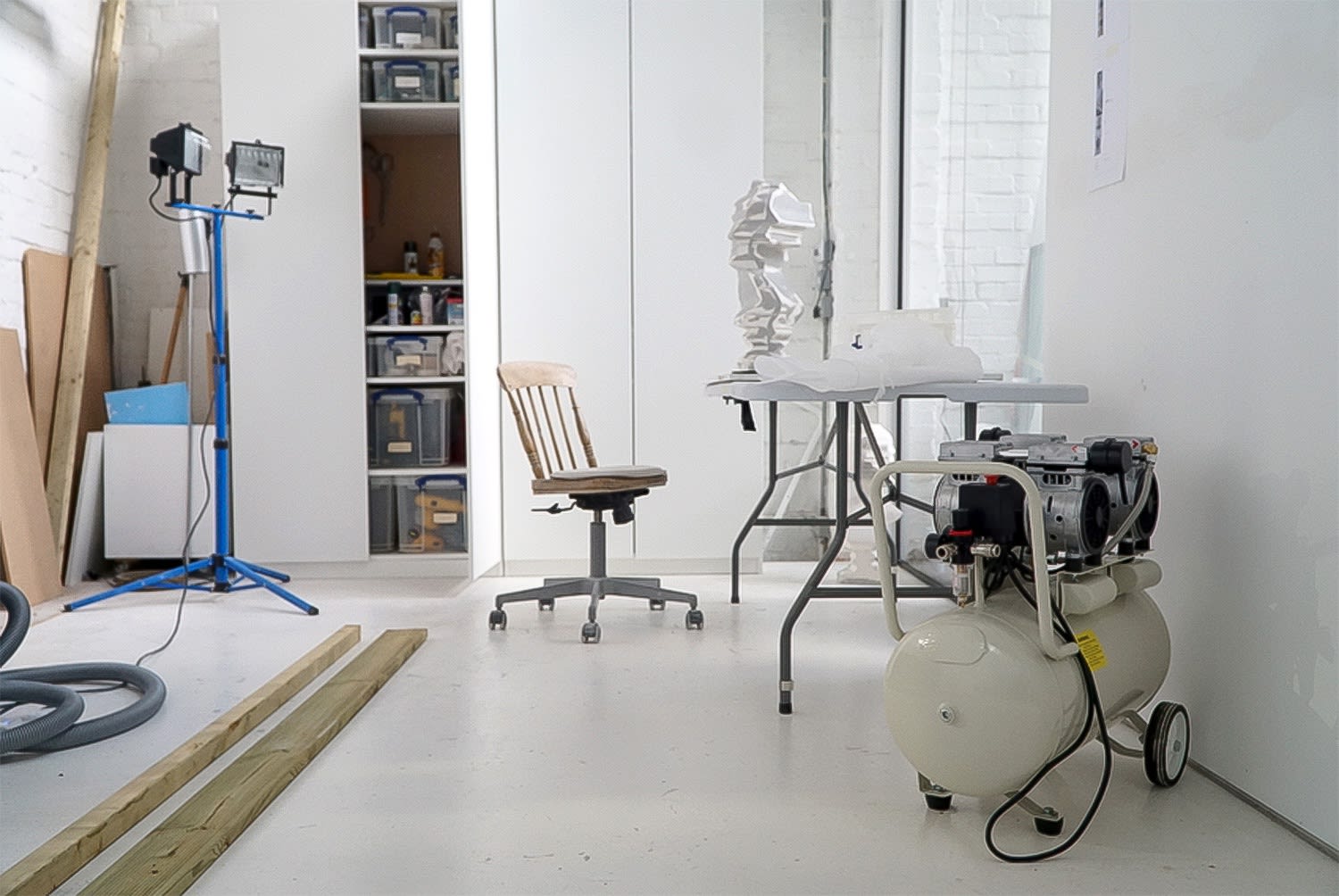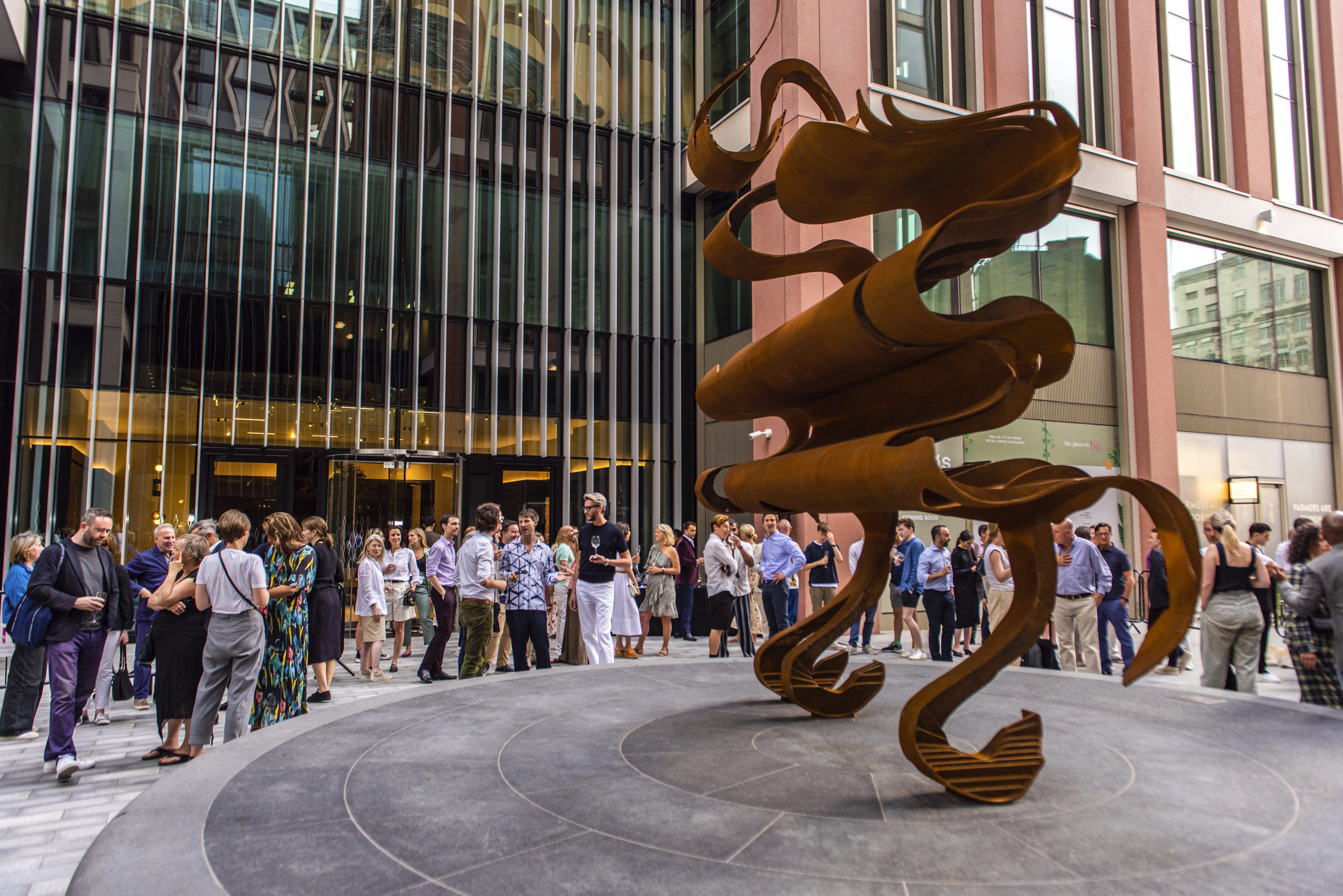CULTURE & LEISURE / CULTURE
text below has been automatically translated
Artist Nick Hornby creates images beyond power. One image and two views. Reading between two points.
Article date: October 18, 2023
[Ming Pao News] British artist Nick Hornby recently won three London public art projects and erected three permanent outdoor sculptures in three places in London. This is a rare case. The third work, the bronze sculpture Do It All, has just been unveiled at Royal Warwick Square in London. Compared with previous outdoor sculptures, its public art creation presents a different landscape from the past.
Outdoor sculptures have meanings in different eras. For example, in the early days, most of the works were to praise great figures, who had to have sufficient status to create statues. Later, it evolved into public art, with the purpose of beautifying the city and educating the public. In recent years, outdoor sculptures have become "more attitudeful" and become a media with diverse voices. For example, Moments Contained, 2023, created by British artist Thomas J. Price outside Rotterdam Central Station this year, is a sculpture of civilians, changing the convention of outdoor portrait sculptures based on standing statues of great men. Horse and Rider, 2014, created by Charles Ray, was previously exhibited outside the Bourse de Commerce in Paris. On the one hand, it echoes the bronze statue of Louis XIV adjacent to the Place des Victoires. On the other hand, it is the artist transformed into a jockey, through shaping The tension between jockey and horse reflects a feeling of powerlessness, contrary to the nature of outdoor sculptures that are seen as symbols of power. Nick Hornby's latest three permanent outdoor sculptures approach this from another angle, going against the tradition of outdoor portrait sculptures.
The first time I noticed the work of British artist Nick Hornby was his Hydrographics series titled Zygotes and Confessions at the Wells Gallery MOSTYN in 2020. He used streamlined sculptures with marbling techniques to combine different pictures. Printed on sculptures, it presents a visual effect of "a plane being twisted by a three-dimensional sculpture". This kind of thinking about reversing vision can also be seen in his earlier multi-angle sculptures Intersections series, which infused the cubism style into sculptures. His latest three works are Power over others is Weakness disguised as Strength, 2023, made of Corten rust-faced steel, located in Orchard Place, Westminster, 2023, the bronze sculpture Here and There, 2023, located at One Kensington Road; Bronze statue of Do It All, Royal Warwick Square, 2023.
Nick Hornby creates portraits of London closely, and London also has special meaning to him. "The so-called Londoners have many facets and contradictory qualities. On the one hand we are apologetic, but on the other hand we are also very enterprising. We are very open, but also not as easy to accept outsiders as a club. We are not as fanatical as New York , but it is not as easy to travel as Belgium and Luxembourg. We are very eager for contemporary and popular culture. Cities in the southern Mediterranean and Rome, Italy are obsessed with history and the Renaissance. Some cities only focus on the future, but London focuses on both the past and the future. Situation It's like watching an Oasis show at Buckingham Palace. Tate Modern and high-end restaurants are located in former factories. We like this contradiction and feel at ease. I was born in London and grew up in London. I have lived on the same street since I was a child and know this city very well. The beauty of it. Most of my works are about multiple aspects of art history, combining multi-faceted and multi-layered narrative methods. This quality also echoes the architecture of London and the city, blending the styles of the medieval Gothic and Victorian eras. These three public sculptures represent and interpret three different metaphors, namely jockeys, commemorative portraits, and the combination of architecture and portraits. On the surface, they fit in with the mainstream of public portrait sculptures, but what connects the three is the style and narrative. Way." More than just between the two sides.
The three new works all have the appearance characteristics of "one side and one view". For example, the latest Do It All, 2023, has The Albert Memorial on one side and the portrait of the ancient Egyptian Queen Nefertiti on the other, which seems to be different from the traditional 360-degree viewing criteria for statues. "But as a creator, these 'two sides' are not my sculptures, but two starting points for reference angles. The work is between these two reference angles. The lines on both sides disappear when the angle is changed. Not a sculpture with two visual axes. When I look at artwork by famous artists, the first thing I see is how the work echoes and references other artists. I might see both Francis Bacon and Van Gogh in one painting. Shadow. I will analyze it into a circular diagram in my mind, for example, 25% Van Gogh and 40% Francis Bacon, etc. Whenever I look at any culture, I always look at how it echoes other artworks, and This kind of thinking is injected into my three-dimensional works, and the corresponding proportions change as the viewer's angle changes. Different from balancing contradictions, my works focus on the changes in proportions between various artistic relationships."The image of the so-called "artist"
From the answers, it can be seen that he focuses on analysis and technology. Just like the many series he created, he used computer technology to create three-dimensional models before making them into works. The new work Power over others is Weakness disguised as Strength, 2023 also uses computer technology to divide the entire work into 165 Corten rust-faced steel components. The steel sheets are twisted and cut before being welded together to create this front that looks like the protagonist of Don Quixote. The shape of a jockey looks like the distorted line effect in Laurence Sterne's novel The Life and Opinions of Tristram Shandy, Gentleman (1759) when viewed from the side, giving the sculpture a unique technological feel without losing the traditional brushwork. “In recent centuries, the mainstream has created a clichéd image of artists as someone who must be hungry or hiding in an attic, a ragged drunken drunk to the point of death. This image is really only a romantic notion that only existed after the 16th century. The result of -ism. In the Renaissance, an artist was a craftsman, or simply someone who made work for God, for religion. As a queer person, I object to these clichés about creativity. I don’t think there is anything between science and art. Contradiction, the two are actually very similar. I think everything has reality and fiction, and abstraction can be found in mathematics, science, art, and real life. I don’t agree with the clichéd premise of “what an artist should be.” I’m studying in art school. Before, the subjects I studied were art, mathematics, and philosophy. I believe that science and rigor have incredible beauty and charm."
Website: https://www.nickhornby.com
Text: Dawn Hung
Editor: Chen Shuan
Art: Xie Weihao
facebook @mingpaosupplement
Email: feature@mingpao.com
Related words: Sculpture, public art, London artist , Daily Ming Pao-Life & Style







